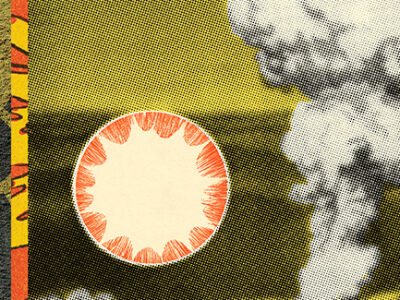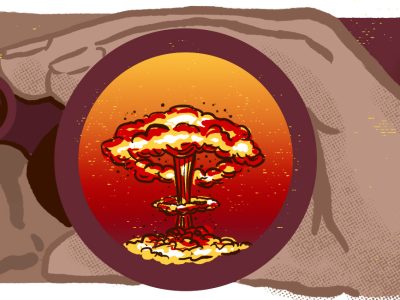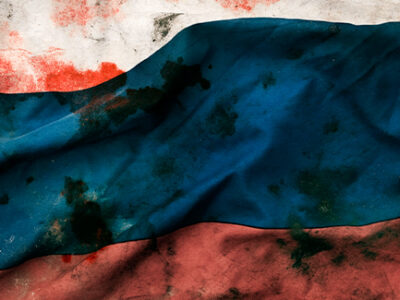“One man with one gun can control one hundred without one,” Lenin once said. The man who gave birth to Soviet Russia believed that strength is first and foremost a means of control, not of war. Exactly 90 years after the October Revolution—which actually occurred on Nov. 7, 1917—Russia’s strategy echoes Lenin’s advice.
Right now, world attention is focused on Russia’s stunning parliamentary election. Last month, however, other major news came from Russia. After several months of tension and negotiations, on Nov. 7 Russian President Vladimir Putin decided that his country would withdraw on Dec. 12 from the Conventional Forces in Europe Treaty, which is seen as a cornerstone of Europe’s defense. Such a move is a protest against a missile shield that NATO plans to establish in Eastern Europe to defend against rogue states such as Iran and North Korea. Putin objects to the missile shield because interceptor missiles would be located in Poland and a radar system would be stationed in the Czech Republic. Putin sees this missile shield as a threat to Russia and has criticized those who support it as trying to build a unipolar world while also breaking Russia’s unity.
“My sacred duty is to bring together the Russian people, unite the people around clear tasks,” Putin declared. “We have one Fatherland, one people and a common future.” Rising from the USSR’s ashes after a decade of hardship, facing the United States, cooperating with China, flirting with India, and worrying the European Union, Putin has set up a strategy that is straight forward: Russia must be a world power.
Russia began its world power pursuit with an underwater territory conquest. A struggle over energy supplies resulted in a Russian submarine team planting a Russian flag on the seabed of the North Pole on Aug. 2. Then on Oct. 30, Russia filed a claim to obtain control of the huge oil reserves, gas and precious stones that are under the Lomonosov Ridge, which is considered an extension of the Siberian continental shelf. Such a conquest could make Russia the world’s biggest oil exporter.
Building deterrence is another element of Russia’s quest to become a world power. Already Russia’s military arsenal is being modernized and the three elements of a nuclear triad are being developed. The first element of this triad is nuclear missiles. On Oct. 18, Putin declared that Russia was working on new types of nuclear weapons, describing the program as “grandiose.” Russia has already successfully launched intercontinental ballistic missiles. And in September, the world’s most powerful vacuum bomb—called the “Father of all bombs”—was tested with dreadful efficiency.
The second element of the triad is that nuclear submarines are being built and improved. On June 2, a Russian submarine launched an intercontinental missile to show its abilities. Russia is also looking forward to expanding its navy action zones, begun with an Aug. 3 project to establish naval bases in the Mediterranean, especially in Syria.
The third element of the triad is strategic bombers. On July 20, bombers flew toward Norway and Guam, resuming Cold War practices. This was confirmed by Putin on Aug. 11 while inaugurating a new radar station near St. Petersburg. It is the first stage of an air defense program to be in place by 2015. This move was underscored by the flights of 14 strategic bombers, which simultaneously took off on Aug. 17.
If deterrence is important, intelligence is what makes the difference between world powers—and Russian spies are already on duty. On Aug. 19, Putin stated that the SVR, the foreign intelligence service, heir of the KGB, was a key institution to Russia’s international power. U.S. and British intelligence have confirmed that Russian spying activities in America have returned to Cold War levels.
Whatever its strength as country, Russia has judged that being alone is dangerous, and thus believes it also needs an alliance. With the Warsaw Pact long gone, the Shanghai Cooperation Organization (S.C.O.) may be a good substitution. The S.C.O. gathers Russia, China and four Central Asian countries—Kazakhstan, Kyrgyzstan, Tajikistan and Uzbekistan—amounting to 1.5 billion people. Four other countries are officially observers: India, Iran, Pakistan and Mongolia, of which the latter three have applied for full membership and could add another 233 million people. If India were to join, the S.C.O. could reach 2.6 billion people. The S.C.O. aims at strengthening international peace and security. It is also considered a counterweight to NATO. On Aug. 17, Russia and China organized the biggest joint exercise, which included the involvement of 7,500 soldiers in a war game in Chebarkul, Russia, and demonstrated deep determination to impress the rest of the world.
Yet waging war is no longer a soldier’s monopoly. Internet warfare has begun. Consider the example of a cyber attack that was launched against Estonia after the Baltic country wanted to remove the Bronze Soldier, a Soviet World War II memorial, from its capital, Tallinn. Although it has denied any connection, Russia is thought to be behind the sabotage. For three difficult weeks, from April to May, the Internet was blocked, clearly hurting Estonia’s economy. Estonia’s minister of defense compared these attacks to those against the United States on Sept. 11. Although NATO was extremely concerned about the incident, it could not act concretely since cyber attacks are not yet considered military actions. Russia, meanwhile, was successful in demonstrating its ability and precision to launch such attacks.
Conquest, deterrence, intelligence, alliance and Internet warfare: Ninety years after the October Revolution, a new Russian era has begun. Thanks to Vladimir Putin, the Russians have found big sticks; now they can speak softly.




